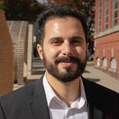Sustainable, Resilient, and Intelligent Buildings
A special issue of Buildings (ISSN 2075-5309). This special issue belongs to the section "Construction Management, and Computers & Digitization".
Deadline for manuscript submissions: closed (31 July 2023) | Viewed by 2960
Special Issue Editor
Interests: intelligent infrastructure systems; applied machine learning; next-generation technologies; optimization, modeling, and simulation; robotics; construction engineering; decision-making; project management; sustainable and resilient communities; infrastructure asset management
Special Issues, Collections and Topics in MDPI journals
Special Issue Information
Dear Colleagues,
With the recent advancements in the architectural, engineering, and construction industry, there are endless opportunities to make buildings and developments more sustainable, resilient, and intelligent. This Special Issue focuses on methods, principles, strategies, and technologies used to plan, design, construct, manage, and operate buildings to ensure they are resilient, smart, environmentally responsible, and resource-efficient throughout their entire life cycle from site selection to demolition or re-use. This Special Issue is not limited to particular building-related sustainability and resilience areas or applications, but rather, it aims to provide a holistic approach toward means needed for ensuring that developments and community spaces are resilient while also supporting the regeneration of resources and natural systems as well as providing socioeconomic benefits through a thriving circular economy. In this Special Issue, original research articles and reviews are welcome.
I look forward to receiving your contributions.
Dr. Rayan H. Assaad
Guest Editor
Manuscript Submission Information
Manuscripts should be submitted online at www.mdpi.com by registering and logging in to this website. Once you are registered, click here to go to the submission form. Manuscripts can be submitted until the deadline. All submissions that pass pre-check are peer-reviewed. Accepted papers will be published continuously in the journal (as soon as accepted) and will be listed together on the special issue website. Research articles, review articles as well as short communications are invited. For planned papers, a title and short abstract (about 100 words) can be sent to the Editorial Office for announcement on this website.
Submitted manuscripts should not have been published previously, nor be under consideration for publication elsewhere (except conference proceedings papers). All manuscripts are thoroughly refereed through a single-blind peer-review process. A guide for authors and other relevant information for submission of manuscripts is available on the Instructions for Authors page. Buildings is an international peer-reviewed open access monthly journal published by MDPI.
Please visit the Instructions for Authors page before submitting a manuscript. The Article Processing Charge (APC) for publication in this open access journal is 2600 CHF (Swiss Francs). Submitted papers should be well formatted and use good English. Authors may use MDPI's English editing service prior to publication or during author revisions.
Keywords
- sustainable design and construction
- resilient buildings
- building technologies
- green buildings
- intelligent developments
- high-performance buildings
- smart urban systems
- circular economy
- life-cycle assessment
- leadership in energy and environmental design (LEED)





